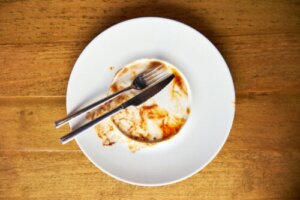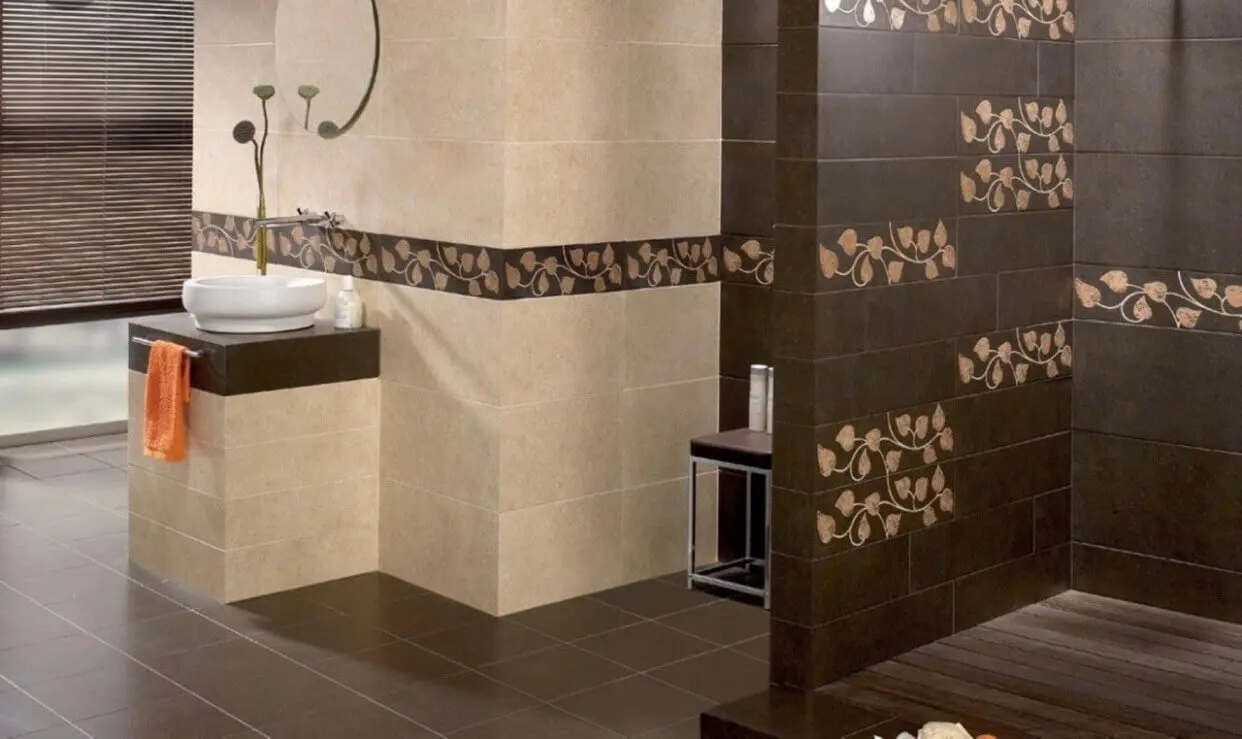How to Clean Stained Porcelain Dishes

Having porcelain tableware is one of the most elegant ways to decorate a table. There are countless options with different quality, durability, and resistance. However, all of them can be tricky to clean and, above all, remove stains after use. Discover how to clean porcelain dishes so that they have the same shine as when they were new.
It’s not necessary to have special cleaning accessories. It’s enough to have some basic materials, such as baking soda, white vinegar, and microfiber cloths. That said, it’s important to avoid some issues, such as the use of bleach and boiling water, as they can damage this fragile material.
What is needed to clean stained porcelain dishes?
Porcelain is a material originating in China, whose manufacture is based on the action of heat on clay. There are different types of porcelain, with greater or lesser thickness, translucency, and resistance. However, in all its presentations it has a certain fragility, so specific measures must be taken for its sanitation.
Thanks to its visual beauty, this type of ceramic is often used for decorative purposes: ornaments, vases, and porcelain dinnerware are common. But one of the most common uses is in tableware sets, such as the finest plates and glasses in homes.
Although they have a major disadvantage: it’s common for them to stain, wear, and lose color. For this reason, there are specific methods that work to remove dirt, taking care of the delicate conditions of the material. It’s enough to apply basic cleaning elements that are usually found in every home.
Elements to use
There are different ways to clean and bleach porcelain. Even though there are commercial products made specifically for this purpose, it’s not essential to use them.
At home you can find the following materials to do it yourself in an effective way:
- A sponge
- Warm water
- White vinegar
- Microfiber cloth
- Baking soda
- A soft bristle brush

We think you may also enjoy reading this article: The 8 Most Common Mistakes When Washing Dishes
Protective methods
If commercial cleaning products are to be used, it is important to follow the manufacturer’s instructions. In addition, it’s advisable to do so in a ventilated environment, since these elements contain chemicals that accumulate in the air. Whenever any of them are applied, rubber gloves should be worn to protect the skin.
What to avoid when cleaning porcelain dishes?
Some basic things should not be used when cleaning porcelain. On the one hand, bleach, except for the bleaching stage.
Also, no harsh or abrasive cleaning products are good for treating this material. On the other hand, very hot water and sudden temperature changes should be avoided, as they can damage the crockery and decorations.
The application of lukewarm water is always recommended.
In addition, it’s advisable to test the cleaning method to be used on an inconspicuous part of the object. In this way, the effectiveness or possible consequences of the method can be discovered before extending it to the entire porcelain.
How to clean porcelain dishes?
In general, it isn’t recommended to place porcelain objects in the dishwasher, unless they are of a variant made of clay, which has greater resistance. However, the most frequently used in household dishes is fine porcelain that tends to be damaged inside the appliance.
Cleaning with baking soda
Therefore, one of the most common cleaning methods is done by hand with baking soda. Form a paste with this product and place it on the stained areas of the dish. Then, rub it with a sponge. The movement has to be soft, in order not to scratch or scratch the material.
How to clean porcelain dishes with white vinegar
White vinegar is a very effective product for sanitizing. In the case of porcelain dishes, apply it on the stained parts after diluting it in a mixture with salt.
Leave it to act for 30 minutes to an hour. Then, remove and carry out a common washing. Test the method on a small, inconspicuous area of the dishware before washing the entire set.
Cleaning porcelain dishes with borax
Sodium borate is increasingly being used for different cleaning strategies in the home. On porcelain dishes, it is effective for removing stains from tea or coffee. Mix borax with lemon juice and go over the dish with a sponge – always gently. Then, rinse well.
Cleaning with hydrogen peroxide
In cases where stubborn stains are not removed, try a solution of baking soda and hydrogen peroxide. Apply it to the grime and leave it on, as with the previous methods. After at least 30 minutes, remove and rinse.
Whitening
A particular instance in the sanitization of porcelain is the process of bleaching and brightness recovery. This is the only time when it’s possible to apply bleach. Always do this with rubber gloves and with the greatest possible caution.
Place the crockery in a container with warm water and a few drops of bleach. It should remain soaking for at least one hour. After this time, rinse with a sponge and dishwashing detergent.
Tips for cleaning other porcelain objects
As well as crockery and ornaments in the living room, porcelain is also present in the bathroom. Many objects are made with this material since it’s so attractive.
However, they also require special cleaning treatment:
- Bathtubs: It’s common for rust stains to occur in this type of tub. In this case, it’s recommended to use a sponge with hydrogen peroxide.
- The toilet: Limescale toilets can be very tricky to remove. Try hydrogen peroxide and, if it does not work, check specific commercial products.
- Tiles: These pieces often accumulate scale stains or watermarks. Prepare a baking soda paste and place it on them.
- Sinks: These porcelain objects can rust or stain with grease. In this case, apply a mixture of baking soda and hydrogen peroxide. Wipe with a sponge and then rinse.
- Faucets and showers: In this case, cleaning is simple. Just apply dish detergent and warm water.

Like this article? You may also like to read: 10 Reasons Why Your House Looks Dirty Even if You Clean It Daily
Cleaning porcelain ornaments
It is common for porcelain ornaments to be some of the most elegant and valuable in the home. Therefore, it’s advisable to clean them delicately, following a series of steps and recommendations. First, remove as much dust as possible from the surface.
Use a microfiber cloth and then a soft bristle brush for the nooks and crannies. Place the ornaments in a plastic container to avoid bumping, cracking, or breaking.
Fill the container with warm water and wash it with a sponge and dish soap. After rinsing, let dry long enough and you will have those decorative vases as good as new.
How to clean porcelain dishes stained with yellow marks
Porcelain is a very aesthetic and functional material, but it can be a lot of work when it comes to cleaning. Sometimes, yellowish stains appear on its surface. These stains can be removed with baking soda, vinegar, water, and a sponge, as well as other similar stains.
Most of the stains that affect this dishware have a solution. Therefore, by dedicating a little time to the task, it’s possible to keep them shining and extend their useful life.
All cited sources were thoroughly reviewed by our team to ensure their quality, reliability, currency, and validity. The bibliography of this article was considered reliable and of academic or scientific accuracy.
- Cáceres Espitia JJ, Caycedo Lozano L, Trujillo Suárez DM (2022). Efecto bactericida del ácido acético presente en el vinagre, una alternativa a desinfectantes sintéticos o químicos. Revisión sistemática. Revista Redipe, Vol. 11, Num. 1, 440-51. https://revista.redipe.org/index.php/1/article/view/1653
- Raab, C., & State University. Extension Service, O. (2006). Pare los gérm enes – limpieza de la cocina. : [Corvallis, Or.] : Oregon State University, Extension Service. https://ir.library.oregonstate.edu/concern/administrative_report_or_publications/5425k996z
- Randall M. German. (2014), Chapter Two – History of Sintering, Sintering: from Empirical Observations to Scientific Principles, Butterworth-Heinemann, Pages 13-40. https://doi.org/10.1016/B978-0-12-401682-8.00002-1
This text is provided for informational purposes only and does not replace consultation with a professional. If in doubt, consult your specialist.








